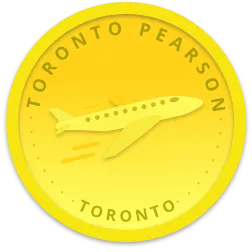"Muddy York"
Toronto is Canada’s biggest city, but it was not always filled with towers of glass and steel. Long before hockey arenas and skyscrapers, the land along Lake Ontario was home to Indigenous peoples. The Wendat, the Haudenosaunee, and later the Mississaugas of the Credit lived, traveled, and traded here.
The name Toronto likely comes from the Mohawk word tkaronto, meaning “where there are trees standing in the water.” It referred to fishing weirs at a narrow channel north of Lake Simcoe. Another possible origin, from a Huron lexicon, is the word for “plenty.” Over time, the name migrated down the Toronto Carrying-Place Trail to the shores of Lake Ontario.
In 1793, Lieutenant Governor John Graves Simcoe founded the town of York at the mouth of the Don River. He laid out a compact grid of streets and built Fort York to defend the settlement.
That defense did not last long. In 1813, during the War of 1812, American troops attacked York, set parts of the town on fire, and fought fiercely at the fort. As British forces withdrew, they set off the gunpowder magazine, causing an explosion that killed soldiers on both sides.
The settlement rebuilt, and on March 6, 1834, it was officially incorporated as the City of Toronto. Leaders chose to restore the Indigenous-derived name instead of keeping the unpopular “York.”
Throughout the 1800s, Toronto grew as both a workplace and a refuge. Irish immigrants arrived during the famine, followed by newcomers from across Europe and Asia. Each group brought its own foods, traditions, and neighborhoods.
By the early 1900s, Toronto had streetcars, factories, and a reputation for being a little too proper. That changed after World War II, when the city transformed into one of the most multicultural places on Earth. Today, more than half its residents were born outside Canada.
In 1976, Toronto unveiled its most famous landmark: the CN Tower. At the time, it was the tallest free-standing structure in the world. Generations of kids have pressed their faces to its glass floor, staring down at the city far below.
Visitors today have plenty of history to explore. You can walk through Fort York to imagine the War of 1812, wander the galleries of the Royal Ontario Museum, or ride a ferry to the Toronto Islands for skyline views.
To really feel like a local, you might catch a Blue Jays game, eat your way through Chinatown or Little India, and hop on a streetcar across town.


XP EARNED OUT OF 0
Points Breakdown
| Sticker Collected | 0 XP |
| Card Collected | 0 XP |
| Bonuses | 0 XP |
| Total | 0 XP |
Local Airport
Toronto Pearson International Airport

Elevation
173 m
Opened
1938
Runways
5


